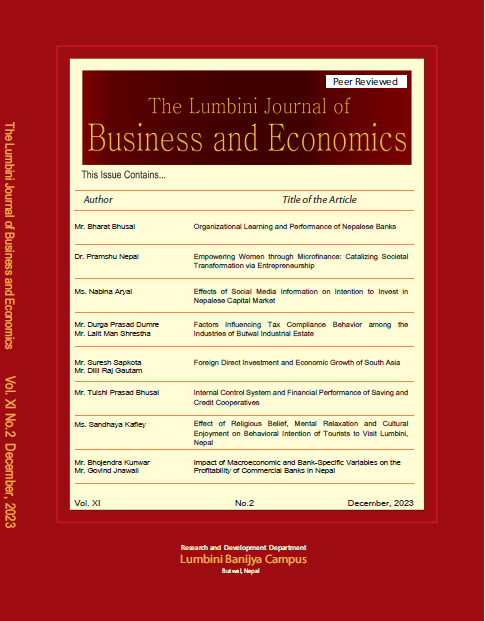Impact of Macroeconomic and Bank-Specific Variables on the Profitability of Commercial Banks in Nepal
DOI:
https://doi.org/10.3126/ljbe.v11i2.64729Keywords:
Bank Specific Variables, Macroeconomic Variables, Net Interest Margin, Profitability, Return on AssetsAbstract
The study aims to investigate how macroeconomic and bank-specific factors affect Nepalese commercial banks’ profitability. The panel data were collected from 16 Nepalese commercial banks for the fiscal year 2006/07 to 2020/21. The bank’s profitability is measured by net interest margin (NIM) and return on assets (ROA). The bank-specific variables considered in this study are bank size, capitalization, credit risk, deposit-to-total-assets ratio, capital adequacy ratio, and credit-to-deposit ratio. In addition, interest rate, broad money supply, inflation rate, and growth rate of the GDP are used as macroeconomic independent variables. The results of random effect model showed that the most significant bank-specific factor influencing Nepalese commercial banks’ profitability is bank size. Furthermore, the results reveal that the bank-specific factors namely bank size, credit risk, deposit-to-total assets, capital adequacy ratio, and credit-to-deposit ratio significantly increase net interest margin (NIM). Regarding the macroeconomic factors, the findings have explored that interest rates, inflation, economic growth, and the size of the money supply all significantly affect NIM. However when it comes to ROA, the data demonstrate that, aside from interest rate, all macroeconomic factors significantly affect the bank’s profitability as determined by ROA.




